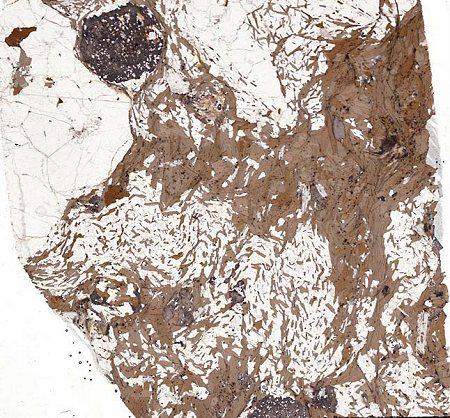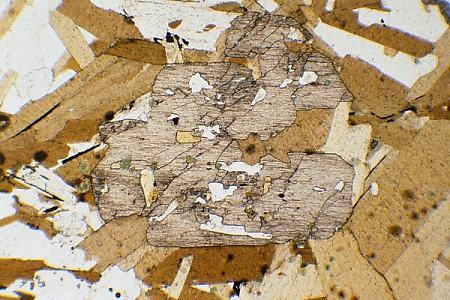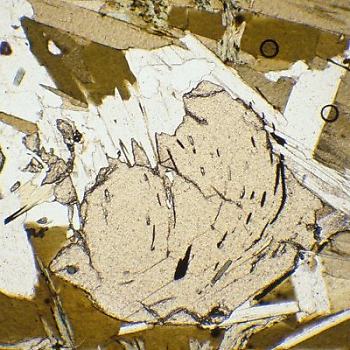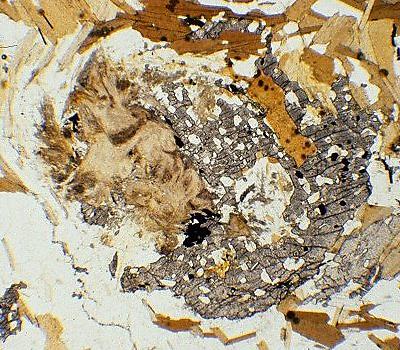
This schist comes from the Trough zone of the Damara belt, Namibia, in an area studied by Karl Kasch (who kindly provided this specimen). The Trough zone consists of a thick sequence of clastic sediments, further thickened tectonically during southwards-directed overthrusting over the Kalahari craton. The principal difference in the overall microstructure compared with the Central zone (case 3 sample DWD-10) can be attributed to two factors: fluids and deformation. The rock contains evidence for
This rock has reached the prograde stage at which the last remaining staurolite breaks down, and sillimanite appears. The microstructures are similar to those described by Yardley (1977). As in DWD-10, two Al-silicates are present, without any evidence for the transformation of the presumed metastable kyanite into sillimanite.
Despite the difference in microstructure attributable to fluids and deformation, the reaction mechanism and pathways are essentially similar to those of the finer-grained rock.

Whole-thin-section view showing quartz vein stringer (left), tightly folded
quartz-feldspar and micaceous interlayers. Coarse mica in mica-rich bands
defines a N-S schistosity.

Kyanite with idioblastic outline against coarse biotite.

Staurolite partly replaced by coarse muscovite flakes.

Garnet partly pseudomorphed by biotite and sillimanite. Note that the large brownish knot of fibrolitic sillimanite (left) lies entirely within the former outline of the garnet.
Kasch, K.W., 1987. Metamorphism of pelites in the upper Black Nossob River area of the Damara orogen. Communications of the Geological Survey of S.W. Africa/Namibia, 3, 63-81.